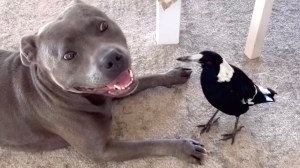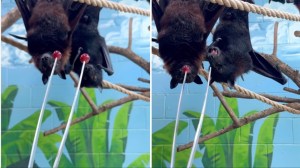Adrian Smith of Ant Lab, who is also a scientist at the North Carolina Museum of Natural Sciences, has continued his fascinating series of ultra slow motion footage that captures the incredible sight of unusual insects as they spread their wings and take flight. In this video, Smith looks at the flight of 11 different insect species from five different taxonomic orders.
Takeoff and flight sequences of insects spanning 5 different taxonomic orders captured at 3,200 fps! Taxonomic info:
nut/acorn weevil (Curculio sp.)
broad-nosed weevil (Asiatic oak weevil Cyrtepistomus castaneus)
Hook-faced Conehead katydid (Pyrgocorypha uncinata)
bush katydid (Scuddderia sp.)
Lesser Angle-wing (Microcentrum retinerve)
Mouse-like Barklouse (Lichenomima sp.)
common barklouse 1 (subfamily: Psocinae)
common barklouse 2 (subfamily: Psocinae)
common barklouse (Cerastipsocus venosus)
March fly (Penthetria heteropteran)
Spined Assassin Bug (Sinea sp.)
Each unique insect was filmed at an incredible rate of 3,200 frames per second, capturing a nuanced view of this instinctive process. Several insects took off in an efficient and graceful manner, while others, such as the march fly, appear to stagger about before heading off into the air.
When I think of a fly in flight, I think of something like this. An insect with extremely fast wing beats; and something that’s sleek, compact flying machine. March flies are not that. Their wing beats are relatively slow, and their legs are everywhere. They kinda tip and wobble when they lift off the ground. They’re the type of insect you can just reach for and pluck out of the air when it flies by.
The spined assassin bug, however, has the most efficient takeoff.
I saved the coolest looking insect for last, a spined, or crowned assassin bug. Named after the intimidating set of spikes on the top of its head. These things fly in a way that totally suits an insect that makes a living impaling and liquifying the guts of other insects. The front legs which are thickened and spiked are used to grab and hold onto prey. In flight, they are held out in front of the body, like the bug is flying to pounce on the next victim. They seem just methodical, compared to the rest of the insects in this video. There’s no jumping, no wobbling, just up and off.






